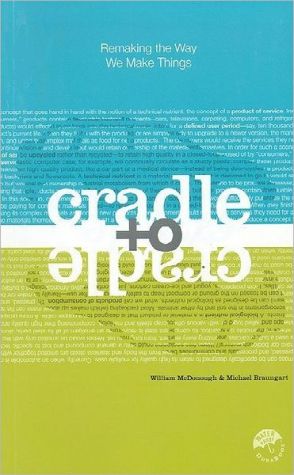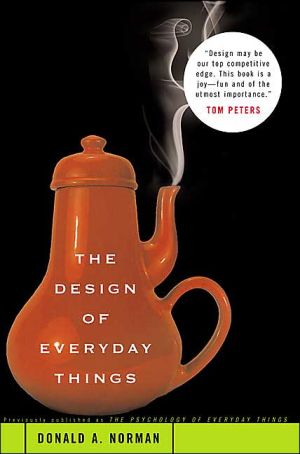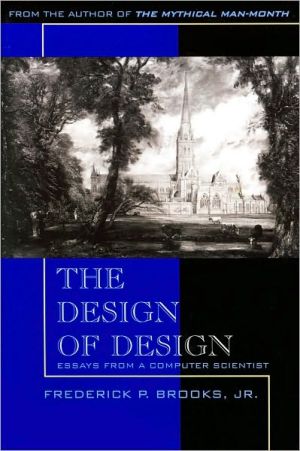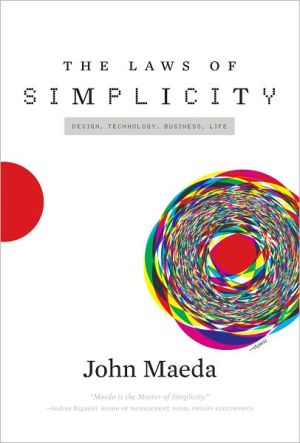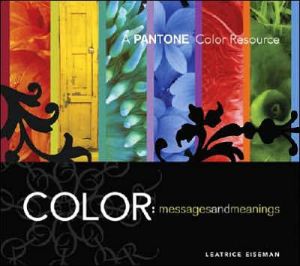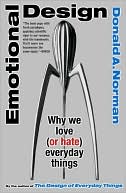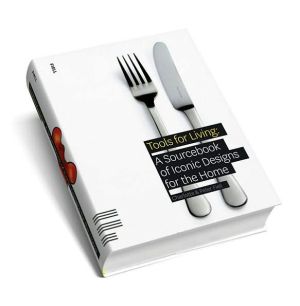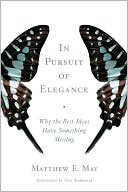Cradle to Cradle: Remaking the Way We Make Things
A manifesto for a radically different philosophy and practice of manufacture and environmentalism\ "Reduce, reuse, recycle" urge environmentalists; in other words, do more with less in order to minimize damage. As William McDonough and Michael Braungart argue in their provocative, visionary book, however, this approach perpetuates a one-way, "cradle to grave" manufacturing model that dates to the Industrial Revolution and casts off as much as 90 percent of the materials it uses as waste, much...
Search in google:
William McDonough and Michael Braungart present a manifesto for a radically different philosophy and practice of manufacture and environmentalism. Publishers Weekly Environmentalists are normally the last people to be called shortsighted, yet that's essentially what architect McDonough and chemist Braungart contend in this clarion call for a new kind of ecological consciousness. The authors are partners in an industrial design firm that devises environmentally sound buildings, equipment and products. They argue that conventional, expensive eco-efficiency measures things like recycling or emissions reduction are inadequate for protecting the long-term health of the planet. Our industrial products are simply not designed with environmental safety in mind; there's no way to reclaim the natural resources they use or fully prevent ecosystem damage, and mitigating the damage is at best a stop-gap measure. What the authors propose in this clear, accessible manifesto is a new approach they've dubbed "eco-effectiveness": designing from the ground up for both eco-safety and cost efficiency. They cite examples from their own work, like rooftops covered with soil and plants that serve as natural insulation; nontoxic dyes and fabrics; their current overhaul of Ford's legendary River Rouge factory; and the book itself, which will be printed on a synthetic "paper" that doesn't use trees. Because profitability is a requirement of the designs, the thinking goes, they appeal to business owners and obviate the need for regulatory apparatus. These shimmery visions can sound too good to be true, and the book is sometimes frustratingly short on specifics, particularly when it comes to questions of public policy and the political interests that might oppose widespread implementation of these designs. Still, the authors' original concepts are an inspiring reminder that humans are capable of much more elegant environmental solutions than the ones we've settled for in the last half-century. (Apr.) Copyright 2001 Cahners Business Information.
Introduction\ This Book Is Not a Tree \ \ \ \ At last. You have finally found the time to sink into your favorite armchair, relax, and pick up a book. Your daughter uses a computer in the next room while the baby crawls on the carpet and plays with a pile of colorful plastic toys. It certainly feels, at this moment, as if all is well. Could there be a more compelling picture of peace, comfort, and safety?\ Let's take a closer look. First, that comfortable chair you are sitting on. Did you know that the fabric contains mutagenic materials, heavy metals, dangerous chemicals, and dyes that are often labeled hazardous by regulators — except when they are presented and sold to a customer? As you shift in your seat, particles of the fabric abrade and are taken up by your nose, mouth, and lungs, hazardous materials and all. Were they on the menu when you ordered that chair?\ That computer your child is using — did you know that it contains more than a thousand different kinds of materials, including toxic gases, toxic metals (such as cadmium, lead, and mercury), acids, plastics, chlorinated and brominated substances, and other additives? The dust from some printer toner cartridges has been found to contain nickel, cobalt, and mercury, substances harmful to humans that your child may be inhaling as you read. Is this sensible? Is it necessary? Obviously, some of those thousand materials are essential to the functioning of the computer itself. What will happen to them when your family outgrows the computer in a few years? You will have little choice but to dispose of it, and both its valuable and its hazardous materials will be thrown "away." You wanted to use a computer, but somehow you have unwittingly become party to a process of waste and destruction.\ But wait a minute — you care about the environment. In fact, when you went shopping for a carpet recently, you deliberately chose one made from recycled polyester soda bottles. Recycled? Perhaps it would be more accurate to say downcycled. Good intentions aside, your rug is made of things that were never designed with this further use in mind, and wrestling them into this form has required as much energy — and generated as much waste — as producing a new carpet. And all that effort has only succeeded in postponing the usual fate of products by a life cycle or two. The rug is still on its way to a landfill; it's just stopping off in your house en route. Moreover, the recycling process may have introduced even more harmful additives than a conventional product contains, and it might be off-gassing and abrading them into your home at an even higher rate.\ The shoes you've kicked off on that carpet look innocuous enough. But chances are, they were manufactured in a developing country where occupational health standards — regulations that determine how much workers can be exposed to certain chemicals — are probably less stringent than in Western Europe or the United States, perhaps even nonexistent. The workers who made them wear masks that provide insufficient protection against the dangerous fumes. How did you end up bringing home social inequity and feelings of guilt when all you wanted was new footwear?\ That plastic rattle the baby is playing with — should she be putting it in her mouth? If it's made of PVC plastic, there's a good chance it contains phthalates, known to cause liver cancer in animals (and suspected to cause endocrine disruption), along with toxic dyes, lubricants, antioxidants, and ultraviolet-light stabilizers. Why? What were the designers at the toy company thinking?\ So much for trying to maintain a healthy environment, or even a healthy home. So much for peace, comfort, and safety. Something seems to be terribly wrong with this picture.\ Now look at and feel the book in your hands.\ This book is not a tree.\ It is printed on a synthetic "paper" and bound into a book format developed by innovative book packager Charles Melcher of Melcher Media. Unlike the paper with which we are familiar, it does not use any wood pulp or cotton fiber but is made from plastic resins and inorganic fillers. This material is not only waterproof, extremely durable, and (in many localities) recyclable by conventional means; it is also a prototype for the book as a "technical nutrient," that is, as a product that can be broken down and circulated infinitely in industrial cycles made and remade as "paper" or other products.\ The tree, among the finest of nature's creations, plays a crucial and multifaceted role in our interdependent ecosystem. As such, it has been an important model and metaphor for our thinking, as you will discover. But also as such, it is not a fitting resource to use in producing so humble and transient a substance as paper. The use of an alternative material expresses our intention to evolve away from the use of wood fibers for paper as we seek more effective solutions. It represents one step toward a radically different approach to designing and producing the objects we use and enjoy, an emerging movement we see as the next industrial revolution. This revolution is founded on nature's surprisingly effective design principles, on human creativity and prosperity, and on respect, fair play, and goodwill. It has the power to transform both industry and environmentalism as we know them.\ Toward a New Industrial Revolution\ We are accustomed to thinking of industry and the environment as being at odds with each other, because conventional methods of extraction, manufacture, and disposal are destructive to the natural world. Environmentalists often characterize business as bad and industry itself (and the growth it demands) as inevitably destructive.\ On the other hand, industrialists often view environmentalism as an obstacle to production and growth. For the environment to be healthy, the conventional attitude goes, industries must be regulated and restrained. For industries to fatten, nature cannot take precedence. It appears that these two systems cannot thrive in the same world.\ The environmental message that "consumers" take from all this can be strident and depressing: Stop being so bad, so materialistic, so greedy. Do whatever you can, no matter how inconvenient, to limit your "consumption." Buy less, spend less, drive less, have fewer children — or none. Aren't the major environmental problems today — global warming, deforestation, pollution, waste — products of your decadent Western way of life? If you are going to help save the planet, you will have to make some sacrifices, share some resources, perhaps even go without. And fairly soon you must face a world of limits. There is only so much the Earth can take.\ Sound like fun? We have worked with both nature and commerce, and we don't think so.\ Copyright (c) 2002 William McDonough & Michael Braungart
Introduction: This Book Is Not a Tree3Ch. 1A Question of Design17Ch. 2Why Being "Less Bad" Is No Good45Ch. 3Eco-Effectiveness68Ch. 4Waste Equals Food92Ch. 5Respect Diversity118Ch. 6Putting Eco-Effectiveness into Practice157Notes187Acknowledgments193
\ From Barnes & NobleWe buy, use, and dispose. But what if there were another way? Cradle to Cradle proposes a new paradigm whereby a product's reuse is built into it from the beginning -- for example, this book's plastic "paper."\ \ \ \ \ From the Publisher"Environmentalists too rarely apply the ecological wisdom of life to our problems. Asking how a cherry tree would design an energy efficient building is only one of the creative 'practices' that McDonough and Braungart spread, like a field of wild flowers, before their readers. This book will give you renewed hope that, indeed, 'it is darkest before the dawn'."—Carl Pope, Executive Director of the Sierra Club \ "Achieving the great economic transition to more equitable, ecologically sustainable societies requires nothing less than a design revolution—beyond today's fossilized industrialism. This enlightened and enlightening book shows us how—and indeed, that 'God is in the details.' A must for every library and every concerned citizen."—Hazel Henderson, author of Building a Win-Win World and Beyond Globalization: Shaping a Sustainable Global Economy\ "[McDonough and Braungart's] ideas are bold, imaginative, and deserving of serious attention."\ —Ben Ehrenreich, Mother Jones magazine\ "[A] clear, accessible manifesto... the authors' original concepts are an inspiring reminder that humans are capable to much more elegant environmental solutions than the ones we've settled for in the last half-century."\ —Publishers Weekly\ "A readable provocative treatise that 'gets outside the box' in a huge way. Timely and inspiring."\ —Kirkus Reviews\ "Our planet is alive and the wondrous web of biodiversity provides us with all we need — clean air, water, soil, and energy, as well as food, medicine, resources. Whatever we do, that's what should be the highest priority for protection and we have to adapt everything else to that end. With this book, McDonough and Braungart open our eyes to the way to genuine sustainability by the study of nature and mimicking her ways. This is a groundbreaking book that should be the Bible for the Second Industrial Revolution."\ —Dr. David Suzuki, Professor Emeritus, University of British Columbia\ \ \ \ Publishers WeeklyEnvironmentalists are normally the last people to be called shortsighted, yet that's essentially what architect McDonough and chemist Braungart contend in this clarion call for a new kind of ecological consciousness. The authors are partners in an industrial design firm that devises environmentally sound buildings, equipment and products. They argue that conventional, expensive eco-efficiency measures things like recycling or emissions reduction are inadequate for protecting the long-term health of the planet. Our industrial products are simply not designed with environmental safety in mind; there's no way to reclaim the natural resources they use or fully prevent ecosystem damage, and mitigating the damage is at best a stop-gap measure. What the authors propose in this clear, accessible manifesto is a new approach they've dubbed "eco-effectiveness": designing from the ground up for both eco-safety and cost efficiency. They cite examples from their own work, like rooftops covered with soil and plants that serve as natural insulation; nontoxic dyes and fabrics; their current overhaul of Ford's legendary River Rouge factory; and the book itself, which will be printed on a synthetic "paper" that doesn't use trees. Because profitability is a requirement of the designs, the thinking goes, they appeal to business owners and obviate the need for regulatory apparatus. These shimmery visions can sound too good to be true, and the book is sometimes frustratingly short on specifics, particularly when it comes to questions of public policy and the political interests that might oppose widespread implementation of these designs. Still, the authors' original concepts are an inspiring reminder that humans are capable of much more elegant environmental solutions than the ones we've settled for in the last half-century. (Apr.) Copyright 2001 Cahners Business Information.\ \ \ \ \ From The CriticsArchitect McDonough and chemist Braungart use this little book with its curved corners and strangely smooth paper to embody and represent one of two kinds of engineering which they advocate: development of materials that can be perpetually reused in technology (the authors claim the material can be continually remade into other books and recycled). The other heralded mode of engineering promises the elimination of anthropogenic waste which is not biodegradable into food. In sum, the two maker-thinkers promote the manufacture of objects that usefully die by means of processes and objects that usefully never die. One of the more memorable phrases, "less bad is no good," relates to their envisioned industrial re-revolution, one in which reduction, reuse, and recycling pale in comparison to upcycling, where products nourish or help nourish the planet. No index and few bibliographic notes. Annotation c. Book News, Inc., Portland, OR (booknews.com)\ \ \ \ \ Kirkus ReviewsNoted eco-designers suggest a paradigm shift in human habits of manufacture and consumption. American architect/industrial engineer McDonough and German chemist Braungart collaborated at the 1992 Rio Earth Summit on a proposal for eliminating the concept of waste in industrial design. Here, they elaborate on their theory, explaining that even environment-friendly policies such as recycling and waste-reduction still fall short of achieving for humankind the kind of balance and harmony that other living entities have employed for millennia. The authors, who now run a design consulting firm, examine reigning industrial design practices and our basic misconceptions about waste, arguing against the idea that "less bad is good" and offering several points for future thought about putting their principles of "eco-effectiveness" to work. The emphasis here is on moving beyond traditional thinking about the relationship between nature and humanity to consider instead how to make humanity itself a better-functioning natural system. Despite the awakening of environmentalism over the past three decades, McDonough and Braungart assert, we are still largely stuck with the Industrial Revolution precept of "cradle to grave" consumer goods that become waste. They offer several examples of how industrial processes and thoughtful changes in the design of habitat and work environment might create true self-nourishing systems. Environmental regulations, the authors believe, are needed stopgaps but ultimately exemplify a major design flaw in the way we think about making things. For instance, instead of a more fuel-efficient car, why not a mode of transportation that would not simply be less polluting but wouldactually nourish the atmosphere? Moving past both the planned obsolescence that is the cornerstone of much industry, as well as the control and command structure of environmental regulation, McDonough and Braungart encourage humanity to begin thinking of itself as a self-sustaining entity that does not necessarily need to take a toll on its surroundings. A readable, provocative treatise that "gets outside the box" in a huge way. Timely and inspiring.\ \
